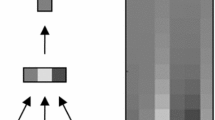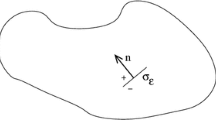Abstract
In practice the relevant details of images exist only over a restricted range of scale. Hence it is important to study the dependence of image structure on the level of resolution. It seems clear enough that visual perception treats images on several levels of resolution simultaneously and that this fact must be important for the study of perception. However, no applicable mathematically formulated theory to deal with such problems appers to exist. In this paper it is shown that any image can be embedded in a one-parameter family of derived images (with resolution as the parameter) in essentially only one unique way if the constraint that no spurious detail should be generated when the resolution is diminished, is applied. The structure of this family is governed by the well known diffusion equation (a parabolic, linear, partial differential equation of the second order). As such the structure fits into existing theories that treat the front end of the visual system as a continuous tack of homogeneous layer, characterized by iterated local processing schemes. When resolution is decreased the images becomes less articulated because the extrem (“light and dark blobs”) disappear one after the other. This erosion of structure is a simple process that is similar in every case. As a result any image can be described as a juxtaposed and nested set of light and dark blobs, wherein each blod has a limited range of resolution in which it manifests itself. The structure of the family of derived images permits a derivation of the sampling density required to sample the image at multiple scales of resolution. The natural scale along the resolution axis (leading to an informationally uniform sampling density) is logarithmic, thus the structure is apt for the description of size invariances.
Similar content being viewed by others
References
Burt, P.J., Hong, Tsai-Hong, Rosenfeld, A.: Segmentation and estimation of image region properties through cooperative hierarchical computation. IEEE Trans. SMC-11, 802–825 (1981)
Cayley, A.: On contour and slope lines. The London, Edinburgh, and Dublin Philosophical Magazine and J. of Science 18 (120), 264–268 (Oct. 1859)
Maxwell, J.C.: On hills and dales. The London, Edinburgh, and Dublin Philosophical Magazine and J. of Science 4th Series 40 (269), 421–425 (Dec. 1870)
Ehrich, R.W., Foith, J.P.: Representation of random waveforms by relational trees. IEEE Trans. Comput. 25, 725–736 (1976)
Guillemin, V., Pollack, A.: Differential topology. Englewood Cliffs, NJ: Prentice-Hall 1974
Hay, G.A., Chesters, M.S.: A model of visual threshold detection. J. Theor. Biol. 67, 221–240 (1977)
Koenderink, J.J., Doorn, A.J. van: The structure of two-dimensional scalar fields with applications to vision. Biol. Cybern. 33, 151–158 (1979)
Koenderink, J.J., Doorn, A.J. van: Visual detection of spatial contrast: influence of location in the visual field, target extent and illuminance level. Biol. Cybern. 30, 157–167 (1978)
Koenderink, J.J., Doorn, A.J. van: Invariant features of contrast detection: an explanation in terms of self-similar detector arrays. J. Opt. Soc. Am. 72, 83–87 (1982)
Marko, H.: Die Systemtheorie homogener Schichten. Kybernetik 5, 221 (1969)
Marr, D., Poggio, T., Ullman, S.: Bandpass channels, zero-crossings, and early visual information processing. J. Opt. Soc. Am. 69, 914–916 (1977)
Marr, D., Hildreth, E.: Theory of edge detection. Proc. Royal Soc. Lond. B 207, 187–217 (1980)
Roehler, R.: Ein Modell zur örtlich-zeitlichen Signalübertragung im visuellen System des Menschen auf der Basis der linearen Systemtheorie kontinuierlichen Medien. Biol. Cybern. 27, 97–105 (1976)
Spivak, M.: A comprehensive introduction to differential geometry, Vol. III. Berkeley, CA: Publish or Perish Inc. 1975
Thom, R.: Stabilité structurelle et morphogenésè. Reading, MA: Benjamin 1972
Witkin, A.P.: Scale-space filtering. Proc. of IJCAI, 1019-1021, Karlsruhe 1983
Author information
Authors and Affiliations
Rights and permissions
About this article
Cite this article
Koenderink, J.J. The structure of images. Biol. Cybern. 50, 363–370 (1984). https://doi.org/10.1007/BF00336961
Received:
Issue Date:
DOI: https://doi.org/10.1007/BF00336961




